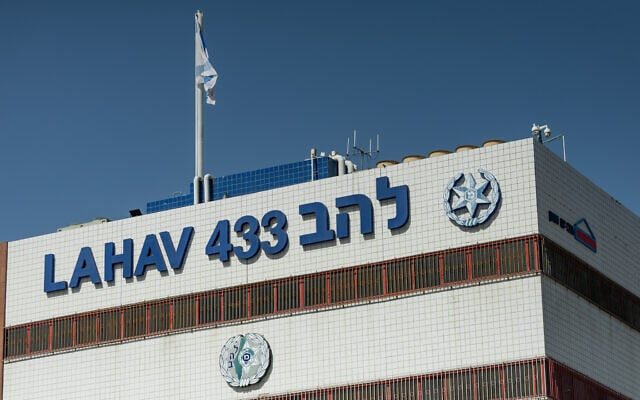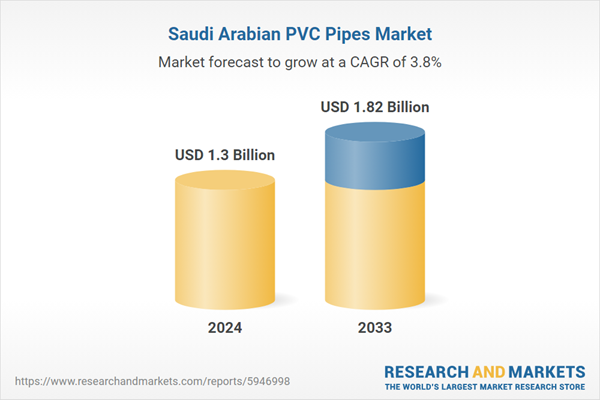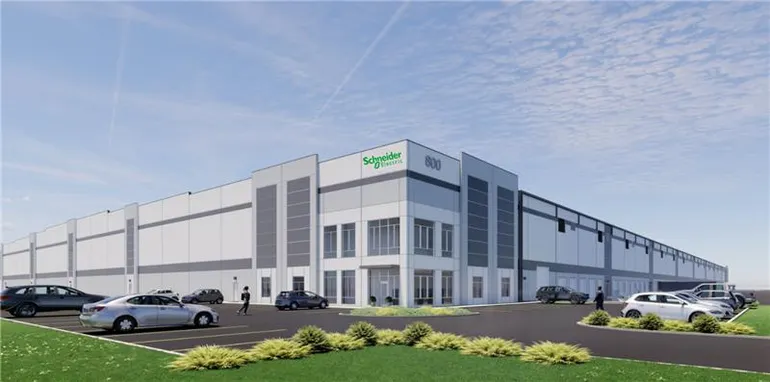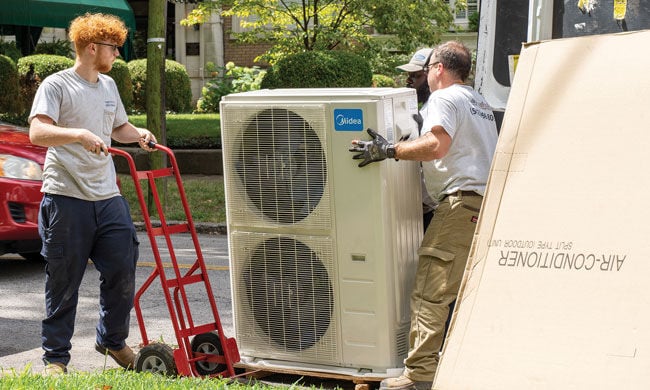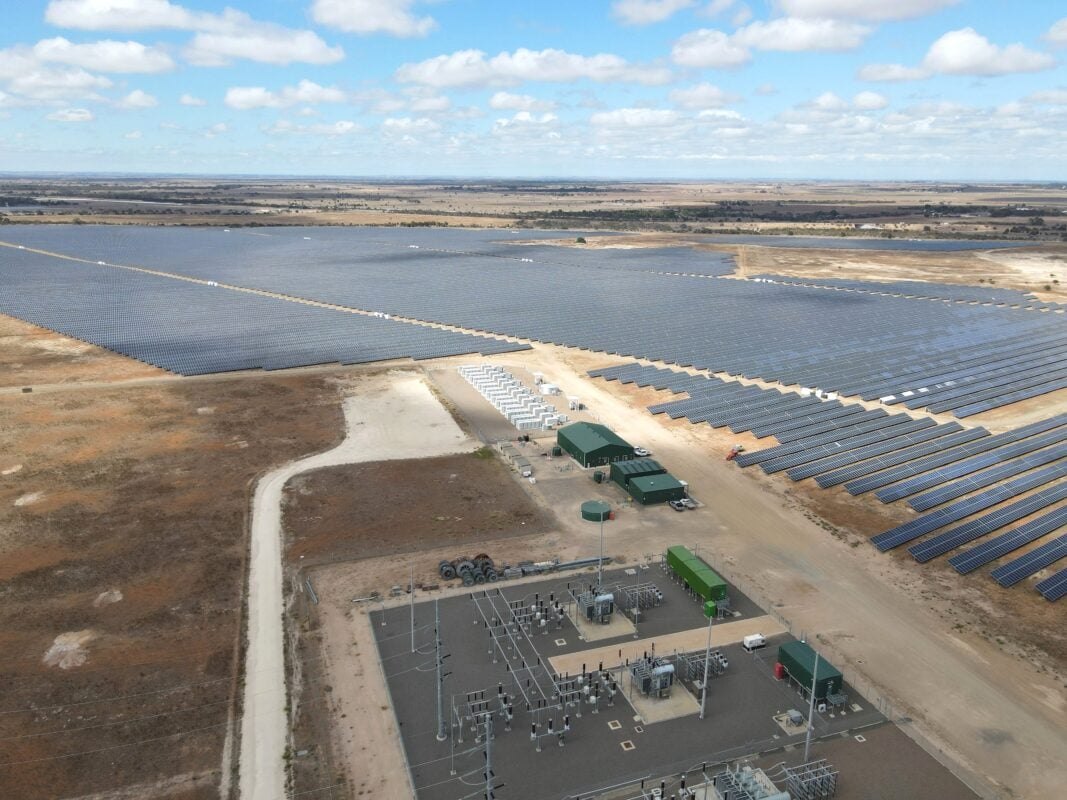Turning waste alkaline water directly into clean hydrogen! – EurekAlert!
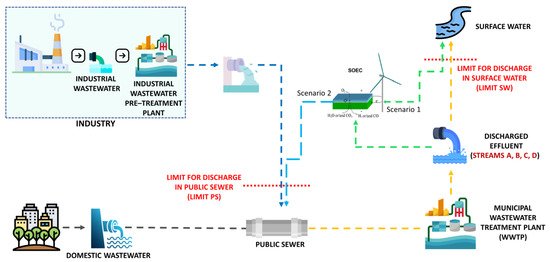
Report on a Novel Catalyst for Sustainable Hydrogen Production from Industrial Wastewater
Executive Summary
A research team at the Korea Institute of Materials Science (KIMS) has developed a durable, non-precious metal-based catalyst that enables the production of clean hydrogen directly from industrial alkaline wastewater. This innovation, utilizing an anion exchange membrane water electrolysis (AEMWE) system, presents a significant advancement in sustainable technology. The process not only reduces the cost of clean hydrogen but also provides a viable recycling solution for industrial effluent, directly contributing to several United Nations Sustainable Development Goals (SDGs), including SDG 6 (Clean Water and Sanitation), SDG 7 (Affordable and Clean Energy), SDG 9 (Industry, Innovation, and Infrastructure), and SDG 12 (Responsible Consumption and Production).
Technological Innovation and Alignment with Sustainable Development Goals
The core of the breakthrough is a heterostructured catalyst composed of nickel and cerium oxide. This technology addresses critical challenges in both energy production and environmental management.
- Catalyst Composition: A non-precious metal catalyst (nickel and cerium oxide) was synthesized via a scalable co-precipitation method, aligning with SDG 7 (Affordable and Clean Energy) by reducing reliance on expensive precious metals and lowering production costs.
- Wastewater Utilization: The system is designed to directly use untreated alkaline wastewater from industries such as semiconductor manufacturing. This supports SDG 6 (Clean Water and Sanitation), specifically Target 6.3, by improving water quality through the reduction of pollution and promoting the recycling and safe reuse of wastewater.
- Innovative Mechanism: The research identified that the interface between nickel and cerium oxide exhibits weak binding with impurity ions in the wastewater. This prevents catalyst poisoning and performance degradation, a key barrier in previous attempts. This innovation is a direct contribution to SDG 9 (Industry, Innovation, and Infrastructure) by upgrading industrial processes to be cleaner and more resource-efficient.
Key Findings and Performance Metrics
The research demonstrated the technology’s viability and robustness in a practical, commercial-scale application. The results underscore its potential for widespread industrial adoption.
- High Durability: The catalyst was tested in a 64 cm² single-cell electrolysis system and operated continuously for over 2,000 hours with less than 5% performance degradation. This long-term stability is crucial for industrial applications and supports the goal of resilient infrastructure under SDG 9.
- Efficient Hydrogen Production: The system maintained high hydrogen production efficiency despite using impurity-rich wastewater, demonstrating a significant step towards making clean hydrogen a competitive energy source, as envisioned in SDG 7.
- Enhanced Material Properties: A two-step thermal treatment process maximized oxygen vacancies and electron–metal–support interactions (EMSI). This enhanced the catalyst’s performance by facilitating the hydrogen evolution reaction and improved its operational stability.
Economic and Environmental Impact
The direct electrolysis of wastewater offers substantial economic and environmental benefits, promoting a circular economy model in line with SDG 12 (Responsible Consumption and Production).
Economic Advantages
- Cost Reduction: Traditional electrolysis requires extensive purification of freshwater. Producing 1 ton of hydrogen typically needs 9 tons of ultrapure water, costing approximately USD 2,340 for purification. This technology eliminates that cost by using an industrial waste stream directly.
- Market Creation: Commercialization is expected to foster self-sufficiency in key materials for future mobility and power industries, creating new markets for clean hydrogen technology.
Environmental Contributions
- Waste Valorization: The technology transforms large volumes of hazardous alkaline wastewater into a valuable resource, contributing to Target 12.5 of SDG 12 by substantially reducing waste generation through recycling and reuse.
- Reduced Pollution Risk: By enabling on-site treatment and utilization of wastewater, the technology minimizes the risks associated with transporting hazardous materials, further supporting SDG 6 and SDG 11 (Sustainable Cities and Communities).
- Climate Action: The production of clean hydrogen is fundamental to decarbonization efforts and directly supports SDG 13 (Climate Action) by providing a carbon-free energy carrier.
Conclusion and Future Outlook
The development of this nickel and cerium oxide catalyst represents a paradigm shift in clean hydrogen production. By successfully integrating waste management with energy generation, the research provides a scalable and cost-effective solution that strongly aligns with global sustainability objectives. The KIMS research team plans to build on this success by developing next-generation AEMWE technology capable of utilizing seawater, further expanding the potential for non-freshwater-based electrolysis and reinforcing the global transition towards a sustainable energy future.
Analysis of Sustainable Development Goals (SDGs) in the Article
1. Which SDGs are addressed or connected to the issues highlighted in the article?
-
SDG 6: Clean Water and Sanitation
The article focuses on a technology that utilizes “waste alkaline water” from industrial processes, directly addressing the issue of wastewater management and reducing the reliance on freshwater resources for hydrogen production.
-
SDG 7: Affordable and Clean Energy
The core of the article is the development of a technology for “clean hydrogen production.” By creating a more efficient and cost-effective method using a “non-precious metal-based” catalyst, it contributes to making clean energy more affordable and accessible.
-
SDG 9: Industry, Innovation, and Infrastructure
The research represents a significant technological “breakthrough” and innovation in industrial processes. It aims to retrofit industries like semiconductor manufacturing by providing a sustainable way to manage their waste and produce energy, promoting “clean and environmentally sound technologies.”
-
SDG 12: Responsible Consumption and Production
The technology promotes a circular economy model by recycling and reusing industrial wastewater (“waste alkaline water”) that would otherwise be costly to treat and pose “environmental hazards.” This directly relates to the sustainable management of waste and natural resources.
2. What specific targets under those SDGs can be identified based on the article’s content?
-
SDG 6: Clean Water and Sanitation
- Target 6.3: By 2030, improve water quality by reducing pollution… halving the proportion of untreated wastewater and substantially increasing recycling and safe reuse globally. The article describes a technology that enables the direct reuse and recycling of “waste alkaline water generated in large volumes from semiconductor manufacturing and metal etching/cleaning processes,” which would otherwise require costly treatment or pose pollution risks.
- Target 6.4: By 2030, substantially increase water-use efficiency across all sectors and ensure sustainable withdrawals and supply of freshwater. The article highlights that conventional methods require “18 tons of raw water to produce 1 ton of hydrogen,” whereas the new technology eliminates this need by using wastewater, thus dramatically increasing water-use efficiency in the energy production sector.
-
SDG 7: Affordable and Clean Energy
- Target 7.2: By 2030, increase substantially the share of renewable energy in the global energy mix. The technology facilitates the production of “clean hydrogen,” a key component of a future renewable energy mix, and is expected to “accelerate the self-sufficiency of key component materials in future mobility and power industries.”
- Target 7.a: By 2030, enhance international cooperation to facilitate access to clean energy research and technology… and promote investment in energy infrastructure and clean energy technology. The research, supported by national foundations and published in an international journal, represents an advancement in clean energy technology that can be shared and implemented globally.
-
SDG 9: Industry, Innovation, and Infrastructure
- Target 9.4: By 2030, upgrade infrastructure and retrofit industries to make them sustainable, with increased resource-use efficiency and greater adoption of clean and environmentally sound technologies. The developed catalyst and electrolysis system is a “clean and environmentally sound” technology designed for direct application in industries, helping them manage waste and reduce their environmental footprint.
- Target 9.5: Enhance scientific research, upgrade the technological capabilities of industrial sectors… encouraging innovation. The work by the Korea Institute of Materials Science (KIMS) is a direct example of enhancing scientific research to create innovative solutions (“technological breakthrough”) for industrial challenges.
-
SDG 12: Responsible Consumption and Production
- Target 12.2: By 2030, achieve the sustainable management and efficient use of natural resources. By using industrial wastewater instead of approximately “18 tons of raw water” to produce hydrogen, the technology promotes the efficient use of water resources.
- Target 12.5: By 2030, substantially reduce waste generation through prevention, reduction, recycling and reuse. The technology is a clear example of recycling and reuse, as it turns “waste alkaline water” into a resource for producing clean hydrogen, thereby reducing industrial waste.
3. Are there any indicators mentioned or implied in the article that can be used to measure progress towards the identified targets?
Yes, several quantitative and qualitative indicators are mentioned or can be inferred from the article:
- Cost Reduction in Water Purification: The article states that purifying freshwater for conventional electrolysis costs “around USD 2,340” per ton of hydrogen produced. The new technology eliminates this cost, serving as a direct financial indicator of efficiency.
- Reduction in Freshwater Use: The technology avoids the use of “18 tons of raw water to produce 1 ton of hydrogen,” providing a clear metric for water savings and increased water-use efficiency (Indicator 6.4.1).
- Technology Durability and Performance: The system demonstrated “less than 5% performance degradation even after more than 2,000 hours of continuous operation.” This serves as a key performance indicator for industrial viability and sustainability (relevant to Target 9.4).
- Hydrogen Production Efficiency: The article mentions the system demonstrated “high hydrogen production efficiency,” which can be measured and tracked as an indicator of progress toward clean energy goals (relevant to Target 7.2).
- Volume of Wastewater Recycled: The technology is designed to utilize “large volumes” of waste alkaline water. The actual volume of wastewater processed by this technology upon commercialization would be a direct indicator of waste reduction and recycling (relevant to Target 6.3 and 12.5).
4. Summary Table of SDGs, Targets, and Indicators
| SDGs | Targets | Indicators Identified in the Article |
|---|---|---|
| SDG 6: Clean Water and Sanitation |
6.3: Improve water quality by increasing recycling and reuse of wastewater.
6.4: Increase water-use efficiency and ensure sustainable withdrawals of freshwater. |
– Volume of industrial alkaline wastewater recycled for hydrogen production.
– Reduction in freshwater consumption for hydrogen production (avoids using 18 tons of raw water per ton of hydrogen). |
| SDG 7: Affordable and Clean Energy |
7.2: Increase the share of renewable energy.
7.a: Facilitate access to clean energy research and technology. |
– “High hydrogen production efficiency” of the new system.
– Cost reduction in clean hydrogen production (saving USD 2,340 on water purification per ton of hydrogen). |
| SDG 9: Industry, Innovation, and Infrastructure |
9.4: Upgrade industries with clean and environmentally sound technologies.
9.5: Enhance scientific research and upgrade technological capabilities. |
– Durability and operational stability of the technology (“less than 5% performance degradation after more than 2,000 hours”).
– Development and application of a novel “non-precious metal-based hydrogen evolution catalyst.” |
| SDG 12: Responsible Consumption and Production |
12.2: Achieve sustainable management and efficient use of natural resources.
12.5: Substantially reduce waste generation through recycling and reuse. |
– Efficient use of water resources by replacing freshwater with wastewater.
– Direct recycling/reuse of “large volumes” of industrial waste alkaline water. |
Source: eurekalert.org

What is Your Reaction?
 Like
0
Like
0
 Dislike
0
Dislike
0
 Love
0
Love
0
 Funny
0
Funny
0
 Angry
0
Angry
0
 Sad
0
Sad
0
 Wow
0
Wow
0


















